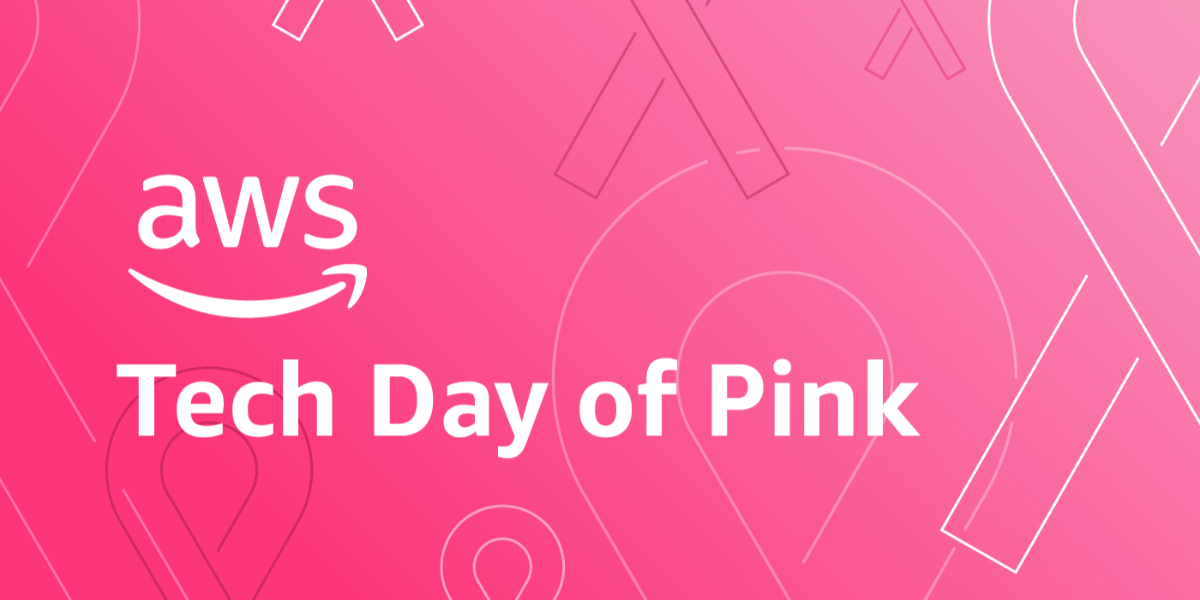AWS Partners with Estée Lauder to Fight Breast Cancer
The Tech Day of Pink is the global initiative dedicated to raising awareness and mobilizing the tech community: here’s how it went.
October was Breast Cancer Awareness and Awareness Month, and Amazon Web Services took part in the , a global initiative dedicated to raising awareness and mobilizing the tech community to help increase awareness and study of breast cancer.
The event
The cloud giant, therefore, participated in the event by joining the annual campaign of the Estée Lauder Companies (ELC) to raise awareness and donations for the Breast Cancer Research Foundation.
Although 2020 is a year destined to be remembered forever for the hard fight against Covid-19 and all its dramatic consequences, it has seen the birth of online charity initiatives aimed at raising awareness and above all fighting. This is precisely the case of the Tech Day of Pink that for every post published during the past month with the hashtag #TimeToEndBreastCancer
#ELCdonates
on Instagram or Facebook, Estée Lauder donated $25 to the Breast Cancer Research Foundation, rising to $100,000.
“At Amazon, we’re obsessed with customers. We think big and stand by our customers to help solve big problems. This includes supporting organizations that make a difference and initiatives like Tech Day of Pink,” said Rachel Thornton, vice president of marketing at AWS. “We are very excited and inspired by our partners and the innovative work they are doing using AWS to support the ongoing fight against this disease.”
The data
According to data from the Ministry of Health, among women, the most frequent cancer is breast cancer, accounting for 30% of all neoplasms, followed by colorectal cancer (12%), lung cancer (12%), thyroid cancer (5%) and uterine cancer (5%). Suffice it to say that, according to ISTAT data, in 2016 it was the leading cause of cancer death in women, with 12,760 deaths.
The prevention of cancer in women involves the execution of 3 screenings and is one of the priorities of the National Prevention Plan 2014-2018.
How-to
Prevention is key. According to data collected by the Ministry of Health, screening for the early detection of breast cancer is aimed at women between the ages of 50 and 69 and is performed with a mammogram every 2 years. In some regions, screening is being experimented between the ages of 45 and 74 (with an annual periodicity in women under 50 years of age) Organized screening programs provide that the examination is performed by viewing the breast both from top to bottom and from the side. Greater accuracy in diagnosis is achieved with the evaluation of the mammogram carried out separately by 2 radiologists. In case of suspicion, the first examination is followed by in-depth analysis and, if necessary, surgical treatment. In recent years, the detection of circumscribed cancers has made it possible to resort to conservative surgery (quadrantectomy). More than 57% of the women invited accept this health opportunity (although in different ways between the various areas of the country).

The AWS Commitment
As many of you know, Amazon Web Service has been working in the field of medical research for a long time, and cancer treatment is one of them. Shez Partovi, M.D. and Director of Healthcare & Life Sciences at AWS, explains what technology can do when it is put at the service of medicine and what the potential is with some examples of real-life applications. “Think of a key as a drug, and the lock as a cancer. Researchers try to find the right key for a particular lock: a drug molecule that interacts with a particular cancer receptor. And that’s where computing power comes in.” A great example of this quantum leap in accelerating drug discovery is given by one of the Amazon Web Services (AWS) partners: “Numbered.”
Using thousands of machine learning models, “Numbered” was able to examine 128 million molecules, looking for the few that could help treat the heart disease they were studying. Numerate applied the “computing muscle” equivalent of a single high-performance processor for 1,000 years in just 12 months. And it discovered 69 drug candidates that were able to move forward with clinical trials.
Computing Power and Medicine
A good example of using the computing power of Amazon Web Service for precision medicine can be found in the “born-in-the-cloud
” biotech company Moderna. It probably won’t sound like new to you, and you’ve already heard about it in the news for the effort to find a vaccine for Covid-19. The same techniques that Moderna is using to examine the virus that caused the pandemic are applied to other diseases, including personalized cancer vaccines and treatments for rare diseases.
